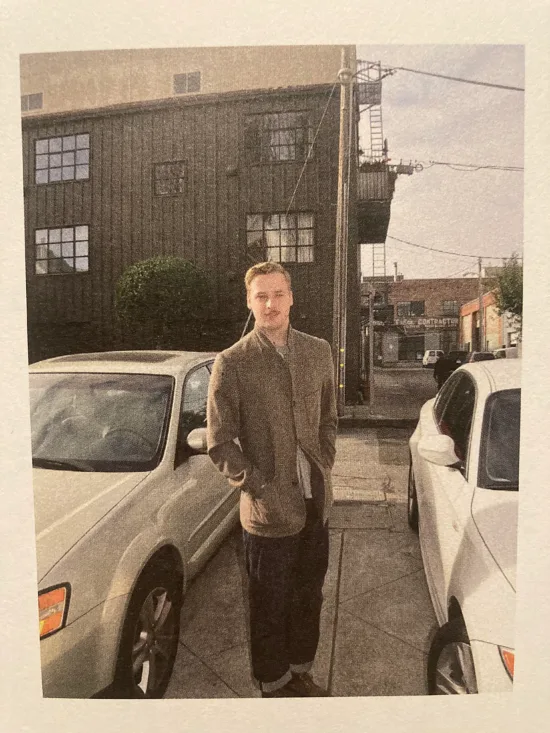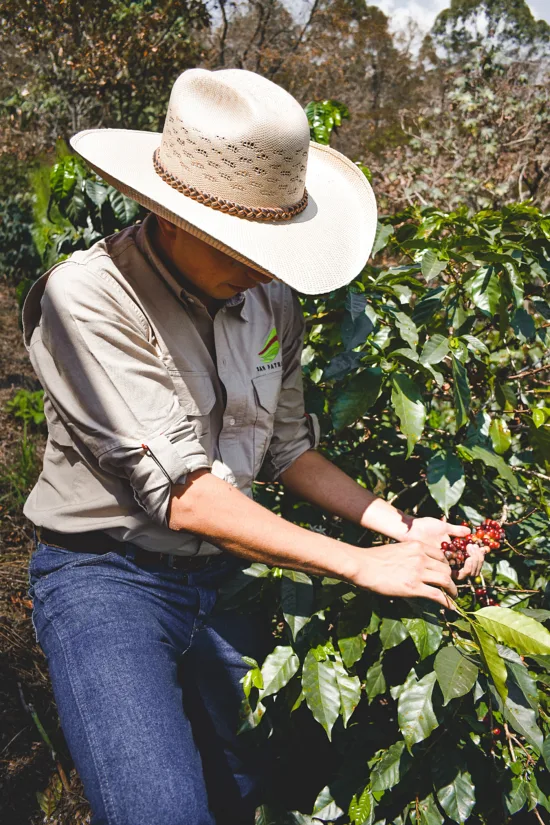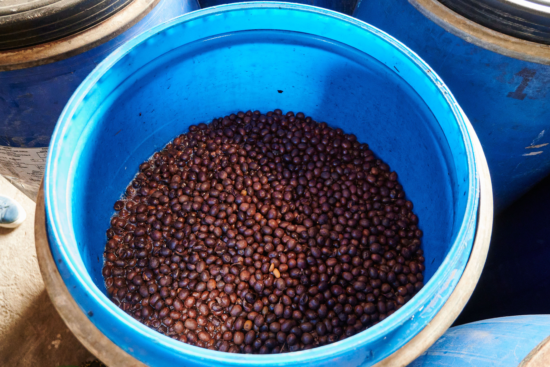This is the absolute fastest way to make French press iced coffee. Just forget about cold brew concentrate – with this Quick French Press Iced Coffee Recipe you can have your iced coffee ready in 5 – 6 minutes. Who doesn’t like the French press?! It’s...
What are modular espresso machines & how do they work?
What are modular espresso machines & how do they work?
What are modular espresso machines & how do they work?
What are modular espresso machines & how do they work?
What are modular espresso machines & how do they work?
What are modular espresso machines & how do they work?
I Tested Keurig K Compact – Here’s Everything You Need To Know
The most affordable Keurig coffee maker is available exclusively at Walmart and comes at a sweet price of only $59.00. In this article, you’ll find out how good it really is, and also find additional information like how to clean it, or do you need a water...
Here’s How to Change Keurig 2.0 Water Filter Easily
Not sure how to change Keurig 2.0 water filter? Here are step-by-step instructions that will help you do it quickly and easily. Keurig water filter should be changed every 2 months or 60 tank refills. The water filter is located inside the water tank, on the valve at...
The coffee rose for assessing Anaerobic coffee
I just came across this really neat tool to assess anaerobic coffees. I haven't used it for cupping yet. I'm not sure I will like it either because the idea of lowering the score of the coffee just because it tastes has some thyme flavors. At the same time I...
Three US Coffee Championship Events Are Heading To Rancho Cucamonga
This article is from the coffee website Sprudge at http://sprudge.com. This is the RSS feed version. The 2024 US Barista Championship, Brewers Cup, and Cup Tasters will take place March 15-17 at Klatch Coffee Roasters in Rancho Cucamonga, California.
The Origin Story of Turtle Island Coffee in Vancouver, B.C.
A new Indigenous-owned coffee company based in Vancouver, British Columbia, called Turtle Island Coffee has launched with the goal of exposing more people to high quality specialty coffee and Indigenous...
Get Ready for The Barista League’s 2024 Season
The Barista League has announced 12 competitions across four continents. BY J. MARIE CARLANBARISTA MAGAZINE ONLINE Photos courtesy of The Barista League When The Barista…
Get Ready for The Barista League’s 2024 Season
The Barista League has announced 12 competitions across four continents. BY J. MARIE CARLANBARISTA MAGAZINE ONLINE Photos courtesy of The Barista League When The Barista…
Get Ready for The Barista League’s 2024 Season
The Barista League has announced 12 competitions across four continents. BY J. MARIE CARLANBARISTA MAGAZINE ONLINE Photos courtesy of The Barista League When The Barista League announces new events, it’s worth paying attention! This year, the schedule will be...
Weekly Coffee News: EUDR and Africa + More Celebrity Coffee
Welcome to DCN’s Weekly Coffee News. Keep up with all the latest coffee industry stories and career opportunities by subscribing to DCN’s newsletter. Tell our editors about your news here. Report: Small-Scale Farmers in...
Do Higher Coffee Prices Mean More Money For Farmers? A Story From Sumatra Shows It’s Complicated
This article is from the coffee website Sprudge at http://sprudge.com. This is the RSS feed version. Since coffee costs more now than ever, do those coffee prices impact the amount of money earned by coffee farmers?
Coffee News Recap, 2 Feb: Applications open for Australia’s Richest Barista 2024, De’Longhi reports 4.6% revenue increase after La Marzocco move & other stories
Every Friday, Perfect Daily Grind rounds up the top coffee industry news from the previous week. Here are this week’s coffee news stories. The word of the week is: expansion. Mon, 29 Jan AeroPress launches limited-edition Clear Pink brewer. The coffee brewer is made...
Watch The 8 Best Coffee Videos Vying For Sprudgie Awards
This article is from the coffee website Sprudge at http://sprudge.com. This is the RSS feed version. The best coffee videos from 2023 featuring Cafe Imports, Aramse, Nguyen Coffee Supply, Wildly, Mirror Coffee Roasters, Alto Stories, Quek Shio, and Cafe Retiro.
Robusta is great and has untapped potential
I live in the US and my typical choice of coffee is lightly roasted Ethiopian pour overs. I generally love acidity and fruit flavors in my coffee. My experience with Robusta has often been poor. Very dark, roasty and maybe chocolatey. I participated in the Hoffman...
Design Details: Brewing Reinvented at ULA Café in Melbourne
Welcome to Design Details, an ongoing editorial feature in Daily Coffee News focused on individual examples of coffee shop architecture, interior design, packaging design or branding. If you are a coffee...
Robert Downey Jr.’s New “Happy Coffee” Is Really Depressing
This article is from the coffee website Sprudge at http://sprudge.com. This is the RSS feed version. Robert Downey Jr. and Craig Dubitsky team up for Happy Coffee.
Out Now: The February + March 2024 Issue of Barista Magazine!
In our new issue we feature Lisa Lawson from Glasgow, Scotland, take a look at the newest grinders, explore spring drink inspiration, see how more women are getting involved in coffee tech, and much more! BY SARAH ALLENBARISTA MAGAZINE We’re stoked to announce the...
The coffee industry’s biggest competition: The story of the World Barista Championship
Every year, the global coffee industry gears up for one of its most exciting and groundbreaking competitions: the World Barista Championship. For more than two decades, the WBC has been one of the biggest catalysts for change and innovation in specialty coffee, and...
The 2023 Specialty Coffee Transaction Guide Has Landed
The 2023 edition of the Specialty Coffee Transaction Guide (SCTG) guide went live today, providing actors throughout the coffee chain a data-driven tool for green coffee price discovery. The full...
Espro great until I needed replacement filter ☹️
I've had an Espro P7 for nearly four years after seeing glowing praise on this sub (to which I later contributed). Before I bought the P7 I looked at the replacement parts available and they seemed like a solid company in that they sold e.g. replacement filters...
New Bill Requires More Kona In Your Kona Coffee
This article is from the coffee website Sprudge at http://sprudge.com. This is the RSS feed version. Currently a coffee only need to be 10% Kona to be labeled as such.
What’s the best and worst part about owning and running a coffee shop?
I'm not interested in getting into it myself, as I have no experience in the service industry, no real appetite for risk and no desire to run a business in general. But sometimes I think about it and I wonder what's the most enjoyable thing about it and...
minimum dose size?
I use the Hario switch to brew my coffee and am trying to reduce my caffeine consumption. Hence I would like to brew smaller cups of coffee. I am currently using 10g of coffee with 160g of water. (1:16 Ratio) I am wondering if there is a minimum amount of coffee...
[CAFE OWNERS] Background before starting a shop?
I’ve worked in coffee for 6 yrs as a barista and shift supervisor and have passion for it. I’ve decided that I want to open my own place in the future and so I’ve been doing the research to make a business plan. Lately, however, I’ve begun to realize just how many...
What are modular espresso machines & how do they work?
For decades, espresso machine design and technology have been evolving to meet the ever-changing needs of coffee shop owners and baristas. From multi-boiler systems and automation to custom branding, there are now more factors to consider than ever before when it comes to the design of an espresso machine.
Many businesses choose to position their espresso machines as the centrepiece of their coffee shops – and for good reason. However, it seems that more and more are deciding to install modular espresso machines.
Rather than being manufactured and installed as a single piece, modular espresso systems are made up of units. Each of these units, or “modules”, has its own distinct function, and a business can install as many of each module as it needs.
To learn more about how modular espresso machines work and the advantages they have over traditional models, I spoke to three industry experts. Read on to find out what they told me.
You may also like our article on why the espresso machine should be the centrepiece of your coffee shop.


What are modular espresso machines?
Espresso machines have been around for almost 150 years. In 1884, Angelo Moriondo patented the first-ever prototype espresso machine, leading others to build on his technology in the following decades.
Since then, the espresso machine has evolved in an endless number of ways. In recent years, we’ve seen an increasing focus on digitalisation, automation, and exerting more control over extraction variables.
Alongside these technological advancements, the design of espresso machines has also significantly changed over the last two centuries. One of the most notable design changes is the emergence of modular espresso machines.
As the name suggests, modular espresso systems are manufactured as separate modules or “units”, rather than an entire machine. This means that each standalone module is designed to carry out a specific function – for instance extracting espresso, steaming or foaming milk, or dispensing water – and are installed separately to one another.
This means that coffee shops can choose to install as many modules as they need. For instance, they might want three single-grouphead espresso modules as well as two milk modules, or fewer if they don’t anticipate demand being as high. These units are installed on top of the counter, while the module that contains the Proportional Integral Derivative (PID) control system is placed underneath the counter – which means customers are only able to see the groupheads and steam wands.
As modular espresso machines are a new concept, many espresso “modules” will contain an integrated display or touchscreen as standard. This allows baristas to view and preset a number of different extraction variables – including water temperature, total extraction time, pressure, and water flow rate.
Jan Adriaens is the CEO of Schuilenburg, a coffee equipment manufacturer in Belgium. He is also an engineer at Perfect Moose, a brand which manufactures automated modular milk foaming solutions.
“We consider modular systems a significant part of improving barista workflow,” he says. “Nowadays, this is crucial to ensure excellent customer service, serve consistent high-quality coffee, and create your own identity to make your coffee shop stand out.
“It’s important for coffee shops to install the right amount of modules, as well as the right combinations of them,” he adds. “[They need to ask themselves a number of questions], including how many coffees do they make per hour and whether they serve more espresso or milk-based drinks.”
Jaime Gamoneda is the Chief Commercial Officer at Heylo, a modular espresso machine brand.
“Modular systems can provide coffee shop owners with more freedom to redesign their own workflow,” he explains.
John Colangeli is the founder and Managing Director at Coffee Machine Technologies, which manufactures the modular espresso machine Tech-Bar.
“Modular systems can be installed in a way that not only improves workflow, they can also create a more personal customer experience,” he tells me.
As they take up much less counter space than traditional espresso machines, modular systems create less of a physical barrier between baristas and customers – making interaction and communication more straightforward.


When were modular espresso machines invented?
In comparison with traditional espresso machines, modular systems are a much more recent invention.
It’s believed that the idea for modular espresso machines first came from Corey Waldron, the founder of Modbar. While he was working as a barista in the 2000s, Waldron felt as though the large size of espresso machines often impaired the consumer experience, as customers weren’t always able to see baristas preparing their drinks.
Alongside Aric Forbing, Waldron launched the first Modbar prototype at the Specialty Coffee Association’s Specialty Expo in 2007. The first working models were showcased at the 2013 Specialty Expo, and some three years later, the company collaborated with La Marzocco to develop the Modbar Espresso AV – which was manufactured using similar technology to La Marzocco’s Linea PB and Linea Mini espresso machines.
However, in recent years, different types of modular espresso systems have emerged, with a range of different technologies as part of that growth. For example, some models include pour over brewing units, as well as groupheads and steam wands.
Jaime tells me that Heylo machines heat water through induction, which means they don’t need boilers.
“This means that the modules can be operated separately, so you don’t need one main machine controlling all of the units,” he explains. “You can also easily attach the modules to each other.”
Jan, meanwhile, says that automation is also a key driver for most modular solutions.
“Our patented smart technology means the milk pitcher can directly interact with the steaming device,” he explains. “This means that the Perfect Moose system can automatically recognise the amount and type of milk, and can then steam it accordingly.”


Are modular espresso machines better?
While it’s clear that modular espresso machines are becoming more popular, we still need to ask important questions about performance.
“There are a number of advantages to using modular espresso solutions,” Jan tells me. “These include easier repair and servicing and a more personalised coffee bar design.”
One of the biggest advantages of modular espresso systems is that they are more customisable than traditional machines. Coffee shops can install a number of different modules, and can create a machine layout which best suits their needs. This means some coffee shops can install a higher number of units, while still having enough counter space to interact with customers.
Moreover, it is significantly easier to repair or replace each individual module, as opposed to fixing an entire machine – which can be particularly useful during busy rushes.
“Modular espresso machines can also be customised with different colours and finishes,” John explains. “Furthermore, because the units are standalone and spread out, it is easier to clean and maintain them.”
Another significant benefit of modular espresso machines is that interaction with customers can be easier.
“Baristas aren’t hidden behind a machine, which can improve customer service and workflow,” Jan says.
However, it’s also important to note that traditional espresso machines also play an important part of coffee shop design, and therefore the customer experience.
For many coffee shops, a traditional espresso machine is often the flagship piece of equipment, and if positioned well, can be used to create a focal point for customers. Moreover, espresso machines can also complement the design and aesthetics of a coffee shop, thereby elevating the brand.
As most modular systems are minimally designed, they can often be less eye-catching than traditional machines – which can ultimately negatively affect the customer experience.
Modular espresso systems can also be more expensive than traditional machines, so coffee shops with smaller budgets may not be able to pay the upfront costs. Furthermore, as they are newer to the market, it can be difficult to order and receive modular espresso machines in a timely manner.


Will they become more popular in coffee shops?
Many coffee shops already use modular solutions – including automated milk steamers and pour over brewers – and there’s evidence that modular espresso machines will continue to become more popular.
“Whenever equipment can improve workflow without compromising coffee quality, it eventually becomes more popular,” Jaime says. “It’s the same with modular systems.”
Jan agrees, saying: “We had to convince baristas that they wouldn’t be replaced by automated milk foamers – steaming milk to produce high-quality microfoam is an essential skill.
“However, over the past few years, the role of the barista has evolved from simply making coffee to being a coffee connoisseur who can interact with customers,” he adds. “Because of this, coffee shop owners need to run their businesses efficiently, [and modular solutions can help with this].
“Customising your own workflow is a logical step for any business,” he concludes.


There’s no doubt that interest in modular espresso machines is growing – largely because of their flexibility and minimalist design.
However, just how popular they might become over the next few years remains to be seen, especially considering how integral traditional espresso machines are for many coffee shops around the world.
Enjoyed this? Then read our article on how the espresso machine influences barista workflow.
Photo credits: Coffee Machine Technologies, Perfect Moose, Heylo
Perfect Daily Grind
Want to read more articles like this? Sign up for our newsletter!
The post What are modular espresso machines & how do they work? appeared first on Perfect Daily Grind.















